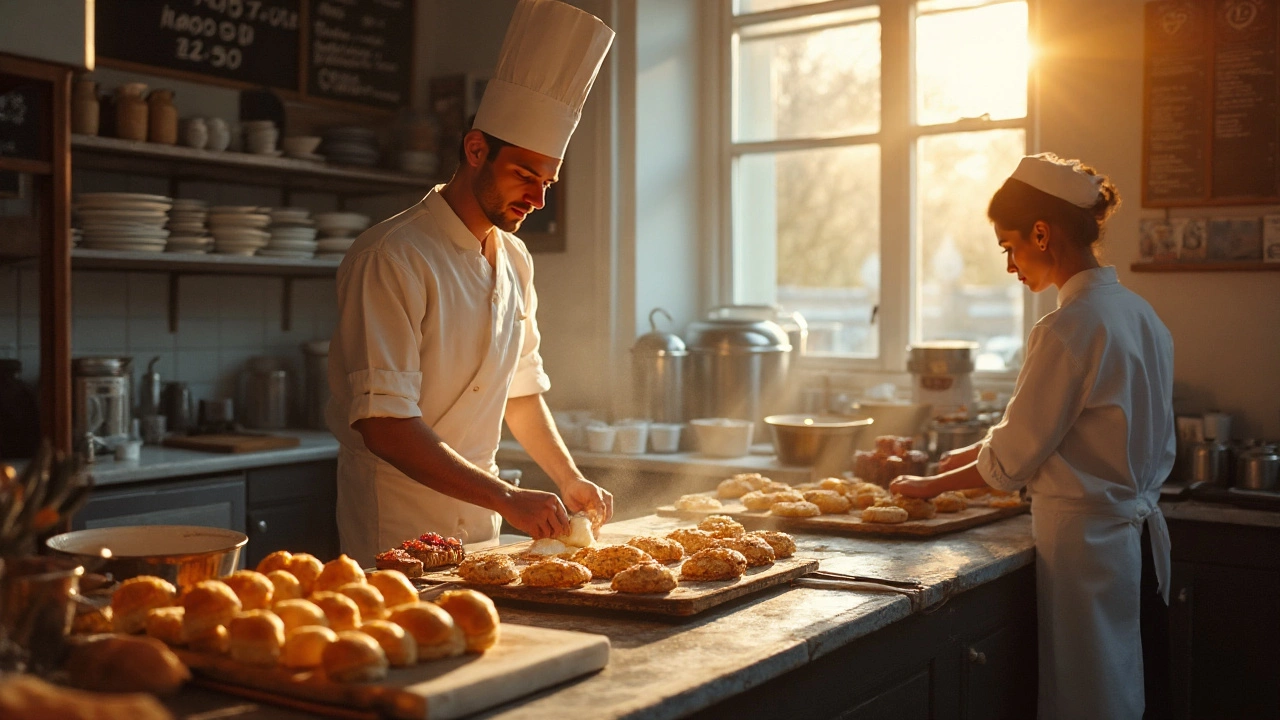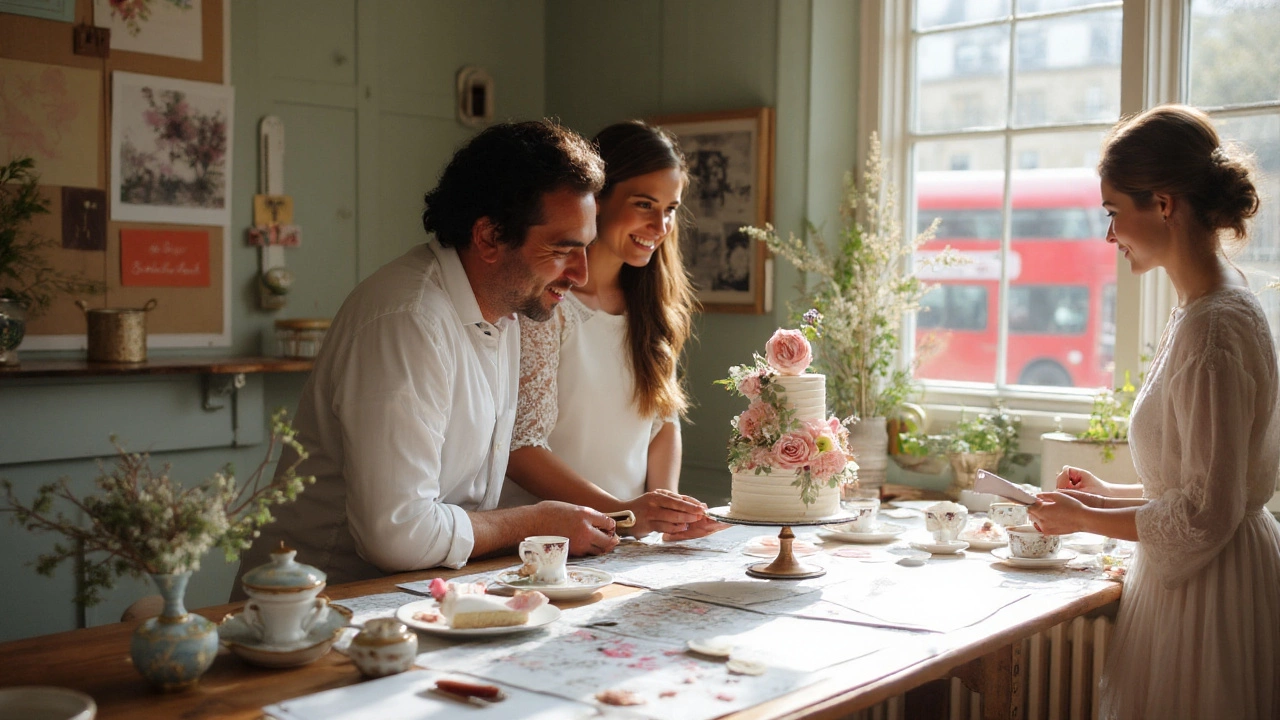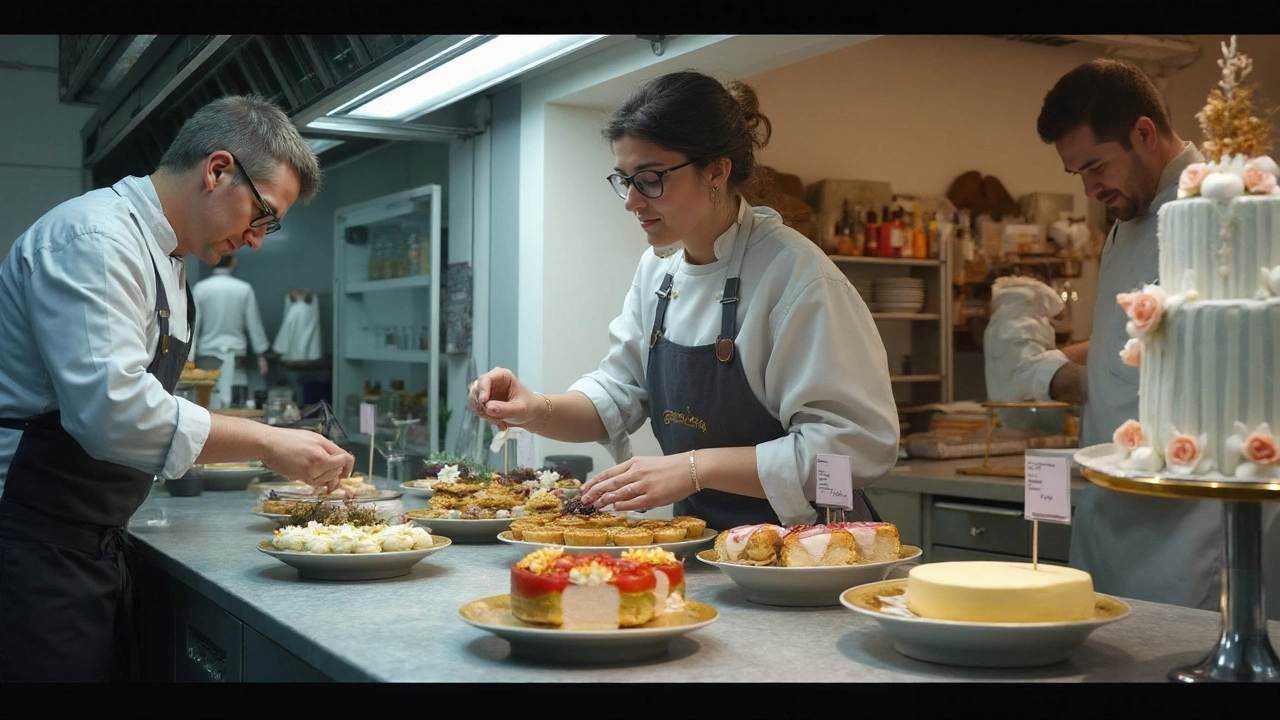What Is a Fancy Baker Called? Pastry Chef or Pâtissier for Wedding Cakes
 Sep, 16 2025
Sep, 16 2025
You clicked because you want the right name for the person who makes beautiful, intricate cakes and desserts. Simple answer? The fancy baker you’re picturing is usually a pastry chef (in French, a pâtissier or pâtissière). But there are a few job titles that matter depending on what you need, especially if you’re planning a wedding cake. Here’s the no-fuss guide with quick definitions, who to hire, and the exact words to use when you reach out to a bakery or studio.
TL;DR: What a “fancy baker” is actually called
Here’s the quick answer, then we’ll go deeper:
- pastry chef (also called a pâtissier/pâtissière): a trained chef who specializes in pastries, desserts, and decorative cakes. This is the most accurate term for a “fancy baker.”
- cake designer/cake artist: focuses on the design and decoration of celebration and wedding cakes; often a pastry chef by training, but not always.
- boulanger: a bread baker (think sourdough, baguettes). Not the person for sugar flowers and fondant sculptures.
- chocolatier/confiseur: specialists in chocolate or confectionery; sometimes overlap with pastry chefs on dessert tables and favors.
For weddings, search for “wedding cake maker,” “cake designer,” or “pastry chef.” If you want advanced techniques (sugar flowers, isomalt sails, hand-painted tiers), ask for a pastry chef or cake designer who shows those skills in their portfolio.
Step-by-step: Who to hire (and what to ask) for your wedding cake
I live in Melbourne, and here’s what I see couples trip over: people use “baker” for everyone, then get bread folks when they needed pastry pros. Use this simple flow to lock in the right person and avoid back-and-forth.
Define the job in 1-2 lines. Example: “Three-tier buttercream wedding cake for 120 guests, Korean-style buttercream florals, citrus-forward flavors.” This helps you filter pros in minutes.
Choose the right title to search: use “wedding cake designer,” “wedding cake maker,” or “pastry chef.” Avoid “bakery near me” if you want advanced design; start with “patisserie” or “cake studio” for more complex work.
Check qualifications that match your brief:
- Portfolio: Look for the exact techniques you want (sugar flowers, bas-relief, palette-knife textures, clean edges).
- Training: Certificate III in Pâtisserie (Australia), apprenticeships (e.g., CAP Pâtissier in France), or schools like Le Cordon Bleu show solid fundamentals. Not essential, but it signals consistent results.
- Food safety: In Australia, a Food Safety Supervisor certification is standard for businesses handling high-risk foods like cream and mousse.
Ask the five fast questions:
- “What’s your lead time for a three-tier cake in peak season?” (8-16 weeks is common; 4-6 months for spring/summer weekends.)
- “Do you deliver and set up on the day?” (Transport is half the job.)
- “Which designs in your portfolio are similar to my brief?” (You want a like-for-like match.)
- “What flavors and fillings hold well in my venue’s conditions?” (Melbourne summers + outdoor venues = stability matters.)
- “What’s the price range for this size and style?” (You want a range before you spend time on a tasting.)
Use a simple decision rule:
- If you want intricate decoration, choose a pastry chef/cake designer with sugar craft in their portfolio.
- If you want rustic, minimal, delicious cake without heavy ornamentation, a wedding cake maker at a patisserie may be perfect.
- If you want bread displays and dessert tables (choux, tarts, macarons), book a patisserie that offers wedding packages, not just a café bakery.
Book tastings smart: pick 3-4 flavor combos that match season and venue. For 2025 here, yuzu-vanilla, black sesame-honey, lemon-elderflower, and native wattleseed-chocolate are strong with heat and travel.
Lock logistics early: confirm delivery window, contact person on the day, venue access rules, stand hire, and a Plan B for extreme heat (extra dowels, on-site assembly, switch to ganache).

Examples and translations: What these titles really mean
Words vary by country, but the work is consistent. Here’s how to decode what you’ll see on websites and Instagram bios.
- pâtissier (male) / pâtissière (female): French terms for pastry chef.
- boulanger/boulangère: bread baker.
- cake designer/cake artist: design-led cake specialist, often wedding-focused; may or may not be hospitality-trained.
- chocolatier: chocolate specialist; perfect for bonbon favors and chocolate décor.
- confiseur: confectioner; sweets like caramels, nougat, dragées.
- viennoisier: laminated and enriched doughs (croissants, brioche). Great for brunch, not tiered wedding cakes.
How to use these in real life:
- When emailing: “We’re after a classic three-tier wedding cake. Are you a pastry chef or cake designer, and could you share similar designs you’ve made?”
- When searching: “Melbourne wedding cake designer bas-relief,” “patisserie sugar flowers,” “buttercream peonies cake.” Specific technique words pull up the right people fast.
- When comparing quotes: Ask for a sketch or reference photo, portion count (coffee vs dessert portions), exact finishes (ganache under fondant, or all-buttercream), and delivery fee.
Quick pronunciation guide if you’re using French terms on calls:
- pâtissier: pah-TEE-see-ay
- boulanger: boo-LAHN-zhay
- chocolatier: shock-oh-lah-TEE-ay
One small myth to clear up: you don’t need a French title for quality. Plenty of brilliant Australian cake studios are run by pastry chefs trained through TAFE (Certificate III in Pâtisserie, code SIT31021) and apprenticeships. If you see consistent sharp edges, stable structure, clean florals, and strong reviews, that’s your person.
Checklist, cheat sheets, and a quick comparison table
Use these to make decisions in ten minutes instead of ten emails.
Decision cheats
- If you want sugar flowers that look real: ask for “handcrafted gum paste/flower paste sugar florals.” That’s a pastry chef/cake designer skill.
- If you want an airy, modern texture: search “palette knife buttercream flowers” or “textured buttercream.”
- If your venue is warm or outdoors: pick ganache under fondant, or Swiss/Italian meringue buttercream. Avoid fresh cream tiers unless the venue has reliable refrigeration.
- If your guest count is high but you want a smaller display: do a small display cake plus kitchen sheet cakes in matching flavors.
- If budget is tight: reduce tiers, simplify textures, or choose fresh florals arranged by your florist (edible-safe stems) instead of sugar flowers.
Questions to copy and paste into your enquiry
- “We’re planning a [two/three/four]-tier cake for [guest count] in [month]. Do you have availability?”
- “Which designs in your portfolio are closest to this reference photo?”
- “What flavors do you recommend for [indoor/outdoor] reception?”
- “What’s the price range for this size and finish (buttercream/fondant/hand-painted)?”
- “Do you deliver to [venue], and what’s the delivery/set-up fee and window?”
- “How do you portion dessert vs coffee servings? What size will this serve?”
- “What’s your policy for extreme heat or delays?”
Red flags to avoid
- Only bread photos, no tiered cakes.
- No close-ups of edges or seams (often hides finish issues).
- Vague answers on food safety or storage.
- Reluctance to deliver and set up tiered cakes (transport skill is essential).
- Unclear cancellation policy.
Ballpark price cues (Melbourne, 2025)
- Two-tier buttercream (60-70 serves): AU$380-$650
- Three-tier buttercream (100-120 serves): AU$650-$1,200
- Fondant or complex textures/sugar florals: add 15-40% depending on hours
- Delivery and set-up: AU$60-$200+ based on distance and difficulty
These are typical ranges I see across local studios. Quotes vary by skill, design hours, and peak dates.
Quick role comparison
| Title | Core Focus | Typical Training | Best For | Not Ideal For |
|---|---|---|---|---|
| Pastry Chef / Pâtissier | Pastries, desserts, wedding cakes, sugar work | Cert III in Pâtisserie (SIT31021), apprenticeships, culinary schools | Tiered wedding cakes, intricate finishes, dessert tables | High-volume bread programs |
| Cake Designer / Cake Artist | Design and decoration of celebration cakes | Varies: pastry training or specialized courses; strong portfolio matters | Custom designs, sugar flowers, textures, painting | Large bread orders |
| Boulanger (Bread Baker) | Breads, viennoiserie | Baking apprenticeships, bakery pathways | Bread displays, brunch, morning-after spreads | Decorative tiered wedding cakes |
| Chocolatier | Bonbons, showpieces, chocolate décor | Chocolate-specific training, pastry background helpful | Wedding favors, dessert table accents | Main cake production |
| Confiseur (Confectioner) | Sweets: caramels, nougat, dragées | Confectionery training, pastry crossover | Guest favors, candy bars | Tiered cakes |
If you’re stuck between two vendors, match the exact techniques you love to what you can see-clearly-in their recent photos. Portfolios don’t lie.

Mini‑FAQ and your next steps
Here are the questions couples ask me most when they’re trying to name and book the right pro.
Is “patissier” the same as “pastry chef”?
Yes. “Pâtissier” (male) and “pâtissière” (female) are French for pastry chef. You’ll see both spellings online-with and without accents. Use whatever is easiest in your search.
What’s the difference between a baker and a pastry chef?
“Baker” is broad and often leans bread. A pastry chef focuses on desserts, pastries, and decorated cakes. If you want a wedding cake with sugar flowers, you want a pastry chef or cake designer, not a bread baker.
Do I need someone formally trained?
Not always, but training helps with structure, food safety, and consistency. In Australia, Certificate III in Pâtisserie (SIT31021) is the common qualification. In France, the CAP Pâtissier is the classic apprenticeship. Schools like Le Cordon Bleu teach strong fundamentals. Still, portfolio fit beats diplomas if budgets are tight.
How far in advance should I book?
For Melbourne spring-summer Saturdays, 4-6 months is safe for custom designs; simpler cakes may be fine at 8-10 weeks. If your date is a long weekend or a popular venue, book sooner.
Buttercream or fondant for hot weather?
Fondant over ganache is the most heat-stable. Swiss/Italian meringue buttercream can work with smart transport and indoor storage. Fresh cream is risky unless your venue’s refrigeration is rock solid.
What’s trending for 2025 wedding cakes?
- Palette-knife florals and painterly textures
- Delicate bas‑relief motifs and pressed‑flower effects
- Subtle metallic leaf, soft pastels, and monochrome texturing
- Flavors: yuzu-vanilla, strawberry-yuzu, lemon-elderflower, black sesame-honey, wattleseed-dark chocolate
Can a chocolatier make my cake?
Some can, but most focus on bonbons and showpieces. For your main cake, book a pastry chef or cake designer, then add chocolate favors from a chocolatier if you want the best of both worlds.
What if I only need dessert bar items?
Look for a patisserie offering choux, tartlets, macarons, and entremets. Ask how they handle transport and display; bite-size items slump in heat if not planned.
How do I avoid last‑minute hiccups?
Confirm delivery access, a no‑later‑than time, backup contact, display table size, cake stand strength, and who places florals on the cake. Get all of that in your confirmation email.
Next steps: a quick action plan
- Write your 1-2 line brief and guest count.
- Search for “wedding cake designer” or “patisserie wedding cakes” in your city.
- Shortlist three vendors whose portfolios match your style.
- Send the copy‑paste questions above with your date and venue.
- Book tastings, compare quotes apples‑to‑apples (tiers, serves, finishes, delivery), then lock your date with a deposit.
If you remember one thing, it’s this: the fancy baker you want is a pastry chef-often called a pâtissier-and their portfolio should show the exact techniques you love. Name the skill, and you’ll find the right hands fast.